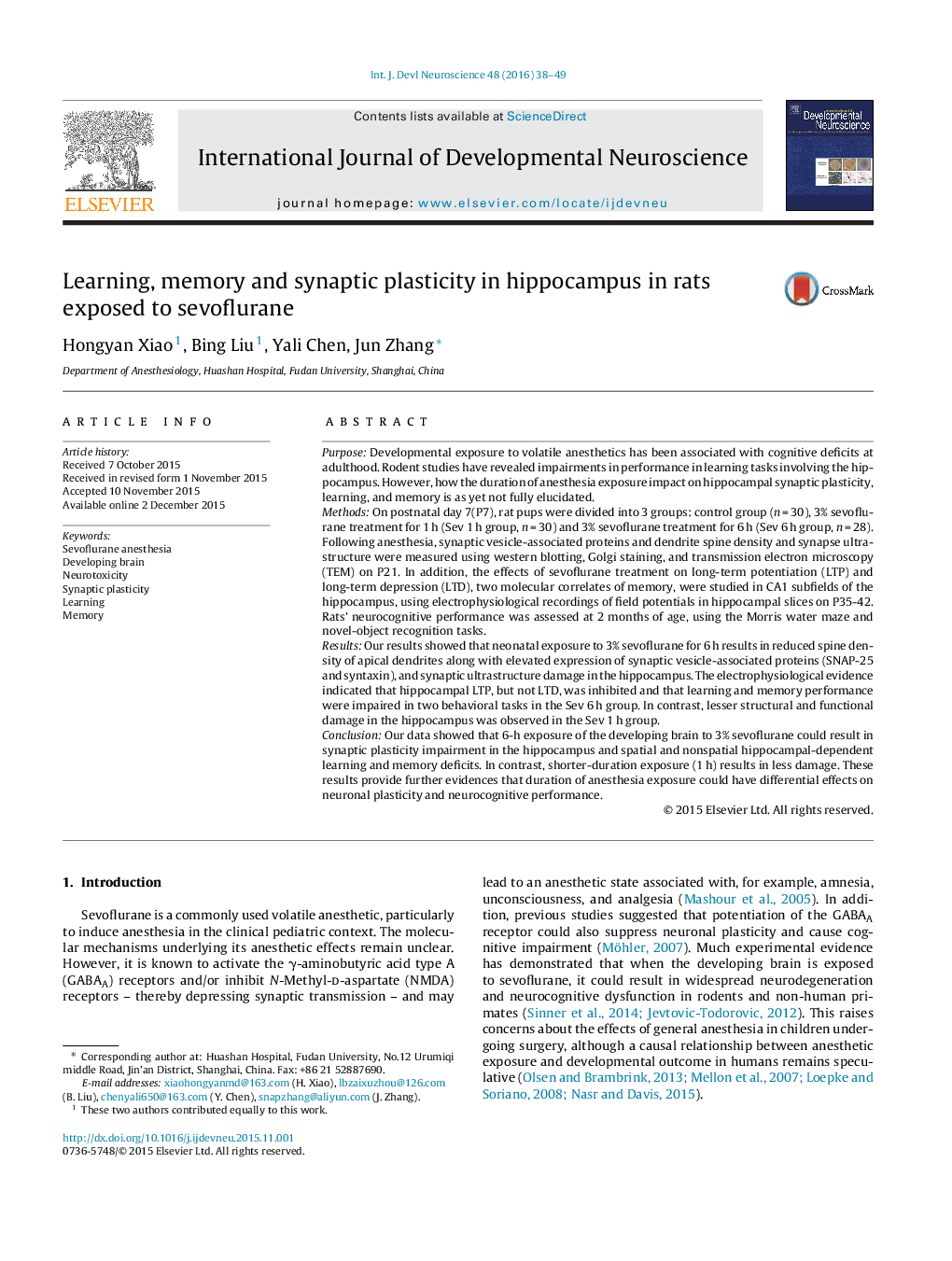| Article ID | Journal | Published Year | Pages | File Type |
|---|---|---|---|---|
| 2785631 | International Journal of Developmental Neuroscience | 2016 | 12 Pages |
•The neonatal rats exposed to 3% sevoflurane for a 6-h duration experienced hippocampal-dependent learning and memory deficits at adulthood.•These deficits may have been the result of synaptic plasticity impairments in the hippocampus.•These impairments includes changes in the density of dendritic spines, synaptic ultrastructure, expression of synaptic vesicle-associated proteins, and long term potential (LTP).
PurposeDevelopmental exposure to volatile anesthetics has been associated with cognitive deficits at adulthood. Rodent studies have revealed impairments in performance in learning tasks involving the hippocampus. However, how the duration of anesthesia exposure impact on hippocampal synaptic plasticity, learning, and memory is as yet not fully elucidated.MethodsOn postnatal day 7(P7), rat pups were divided into 3 groups: control group (n = 30), 3% sevoflurane treatment for 1 h (Sev 1 h group, n = 30) and 3% sevoflurane treatment for 6 h (Sev 6 h group, n = 28). Following anesthesia, synaptic vesicle-associated proteins and dendrite spine density and synapse ultrastructure were measured using western blotting, Golgi staining, and transmission electron microscopy (TEM) on P21. In addition, the effects of sevoflurane treatment on long-term potentiation (LTP) and long-term depression (LTD), two molecular correlates of memory, were studied in CA1 subfields of the hippocampus, using electrophysiological recordings of field potentials in hippocampal slices on P35-42. Rats’ neurocognitive performance was assessed at 2 months of age, using the Morris water maze and novel-object recognition tasks.ResultsOur results showed that neonatal exposure to 3% sevoflurane for 6 h results in reduced spine density of apical dendrites along with elevated expression of synaptic vesicle-associated proteins (SNAP-25 and syntaxin), and synaptic ultrastructure damage in the hippocampus. The electrophysiological evidence indicated that hippocampal LTP, but not LTD, was inhibited and that learning and memory performance were impaired in two behavioral tasks in the Sev 6 h group. In contrast, lesser structural and functional damage in the hippocampus was observed in the Sev 1 h group.ConclusionOur data showed that 6-h exposure of the developing brain to 3% sevoflurane could result in synaptic plasticity impairment in the hippocampus and spatial and nonspatial hippocampal-dependent learning and memory deficits. In contrast, shorter-duration exposure (1 h) results in less damage. These results provide further evidences that duration of anesthesia exposure could have differential effects on neuronal plasticity and neurocognitive performance.
